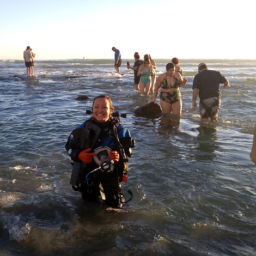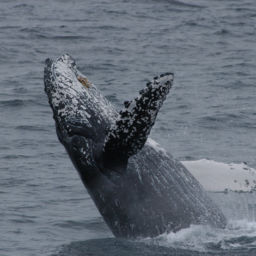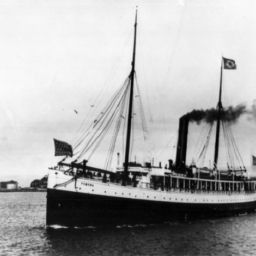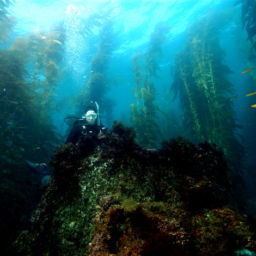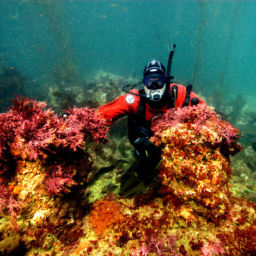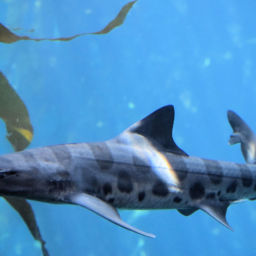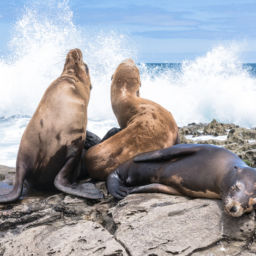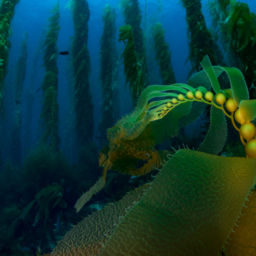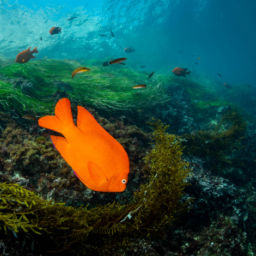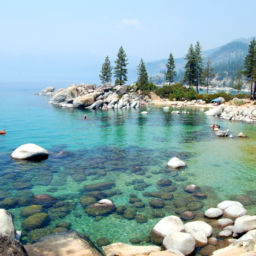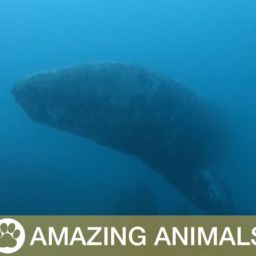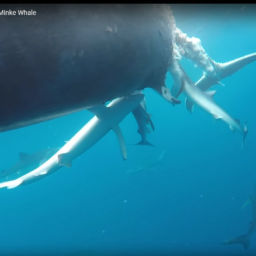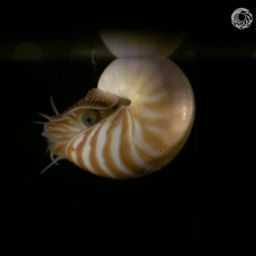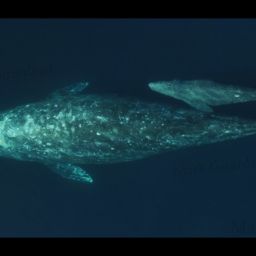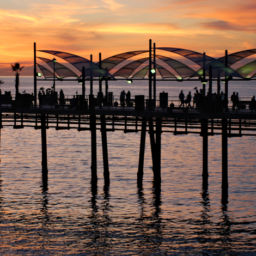There’s an invasion beneath the waves at Channel Islands National Marine Sanctuary. It’s not an alien invasion — although the invaders themselves are green.
Sargassum horneri, an invasive seaweed from Japan, has been replacing native algae in the sanctuary since 2009. In the past six years, its prevalence has shot through the roof. With this seaweed sprawling over the seafloor, who’s the sanctuary going to call?
They call Dr. Nancy Foster Scholar and “underwater landscaper” Lindsay Marks. For her PhD at the University of California, Santa Barbara, Marks studies the fundamental ecology of S. horneri.
In doing so, she’s trying to predict how its growing presence will affect the ecosystem in Southern California.
Invasive seaweed is flourishing
According to Marks, S. horneri has several characteristics that make it a “really great invader.”
It reproduces and matures quickly and can also self-fertilize to reproduce faster. If the parent plant gets dislodged, it can easily drift long distances and drop offspring as it floats along. The invasive algae can also thrive at depths where other species do not.
While the species living within ecosystems can change naturally, invasive species change the abundance and diversity of the native species. This change can leave an ecosystem less stable. This, in turn, can impact its economic benefits (like serving as a nursery for juvenile fish) and recreational offerings (like acting as an intriguing dive site).
S. horneri is no exception. Averaging 10 feet tall, S. horneri is shorter than the 60-foot native giant kelp (Macrocystis pyrifera). It cannot provide the same extensive habitat giant kelp does. Giant kelp houses several species in its canopies, including the valuable kelp bass. If S. horneri continues to replace the native seaweed, these kelp forests will look very different.
It does not taste good to herbivores like sea urchins, it grows really fast, and it reproduces like gangbusters,” says Marks. How, then, can the sanctuary stop S. horneri from spreading?
Tackling the problem
Marks tests how effective it is to remove the invader at Santa Catalina Island, just outside the Channel Islands National Marine Sanctuary. This is one of the first places S. horneri became really abundant. In 2016, Marks removed seaweed before the reproductive season. Not only did she see a 25 percent reduction in the adult population, but she also saw a 50 percent reduction in new S. horneri plants.
While removal as a management strategy seems promising, the 2016 El Niño year tells a different story. The warmer waters it brought to Southern California favor the invasive seaweed. Thus, the corresponding increase in S. horneri may provide a glimpse into future ocean conditions. With the steady increase of sea-surface temperatures, it is possible that the invasive seaweed will start to engulf the sanctuary, even with removal efforts.
Reason for hope
There is still a reason for ocean optimism. Long-standing marine-protected areas and no-take reserves, like those within Channel Islands National Marine Sanctuary, are more resilient to the spread of S. horneri.
“In historical [marine protected areas] within the sanctuary, we see less of the invasive algae than we do in newer reserves that have not had enough time to recover from overexploitation,” Marks says. “There is some hope that well-preserved, healthy kelp forest communities do have the ability to resist these species.”
The logic goes like this: with protection and conservation, ecosystems can find balance within their food webs. For example, areas that have been protected longer have higher populations of kelp-forest predators, like lobsters. The lobsters, in turn, prey on sea urchins. Sea urchins are notorious for their ability to consume vast quantities of kelp, but they are kept in check when lobsters are around. But if lobsters are fished excessively, the urchin population balloons out of control. The many urchins can eat all of the native algae, making space for the invasive S. horneri to proliferate. In protected areas like national marine sanctuaries, resource managers can work closely with fishermen to ensure that enough lobsters and other predators remain to keep the ecosystem healthy.
Taking action
Instead of waiting for Southern California waters to recover over time, Marks is taking action. She worked with researchers at the University of California, Santa Cruz to create an information portal that documents the spread of S. horneri. She also created promotional materials, such as fliers and videos, with California Sea Grant. Marks designed them for recreational divers and boaters, to help them identify the invasive algae, report it, and avoid spreading it. Marks has presented this information to the Channel Islands Sanctuary Advisory Council and stakeholders like dive clubs, in addition to posting fliers around harbors.
Currently, citizens can only harvest up to 10 pounds of invasive algae a day. But by educating the public, Marks is building an army of citizen scientists. In the future, Marks hopes to take citizen groups into the water to participate in her underwater landscaping projects.
“People are very excited to learn about it. Every time I talk to divers about S. horneri, they are all gung ho to go out there and start removing it,” Marks says.
“It’s definitely a dream of mine to keep working to control marine invasive species and harnessing the energy of citizens who want to help.”
By guest author Yaamini Venkataraman
Yaamini Venkataraman is a volunteer social media intern for NOAA’s Office of National Marine Sanctuaries and a graduate student at the University of Washington.






